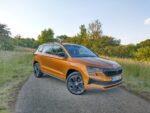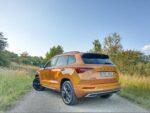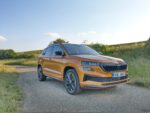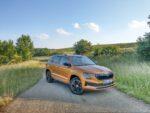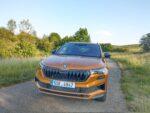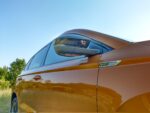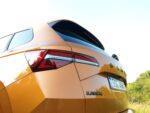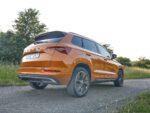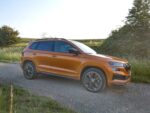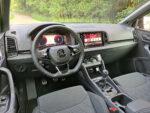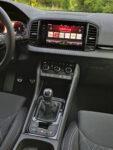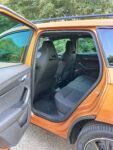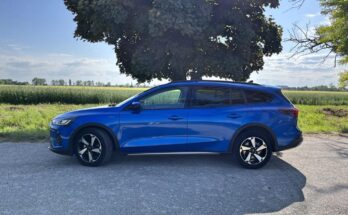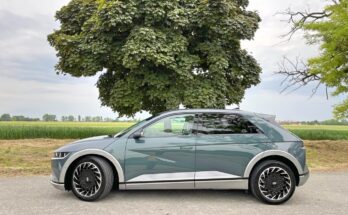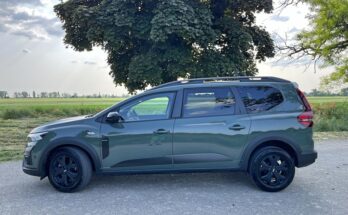Skoda Karoq has been a constant in the SUV segment since 2017, this Mladá Boleslav SUV prize winner was only recently replaced by the Kamiq model. Within the Skoda SUV portfolio, the Karoq is a golden middle ground, i.e. a car with a sufficiently dimensioned interior space, a well-crafted interior and a comprehensive range of engines offered.
The car has recently undergone a traditional generational modernization, which, quite purposefully, worked the most on its external appearance. We currently tested the Karoq in the sporty Sportline version, with a two-liter diesel engine and a six-speed manual transmission.

Exterior
The modernized external appearance of the new Karoq is quite decent as a result. Its new shape is very purposeful, the constant struggle to reduce CO2 emission values has brought certain improvements to this car, which have had an impact on its external appearance.
The front part of the car received light optical retouches in traditional areas. Changes have therefore occurred in the proportions of the front mask, the bumper is newly shaped and also the lights, which received a new light signature for daytime lighting and also LED Matrix technology.
The rear part looks noticeably sleeker, the rear bumper is newly shaped and the taillights, which received animated graphics. The modernized Karoq is then equipped with a more pronounced wing with finlets on its sides, which reduce air resistance and the formation of vortices.
On the sides of the car, let's notice the cast wheels with aerodynamic covers, which are one of the recommended measures to reduce the coefficient of air resistance and thus lower CO2 emissions. Other aerodynamic elements include an active radiator louvre or an Air Curtain that directs air around the front bumper and thus prevents it from swirling along the side of the body. Furthermore, the car is equipped with a more covered undercarriage and tires with lower rolling resistance were also used.
The tested Sportline version is highlighted by black painted accessories such as the covers of the exterior mirrors, the frame with the radiator grille or the elements in the lower part of the front bumper. Adequate "Sportline" plaques on both front fenders are also standard.
As a result, the current modernization of the exterior of the Skoda Karoq can be classified as more modest. The change in appearance is mainly based on the improved aerodynamics of the car, but it definitely benefited the Karoq and the car now has a significantly fresher impression.
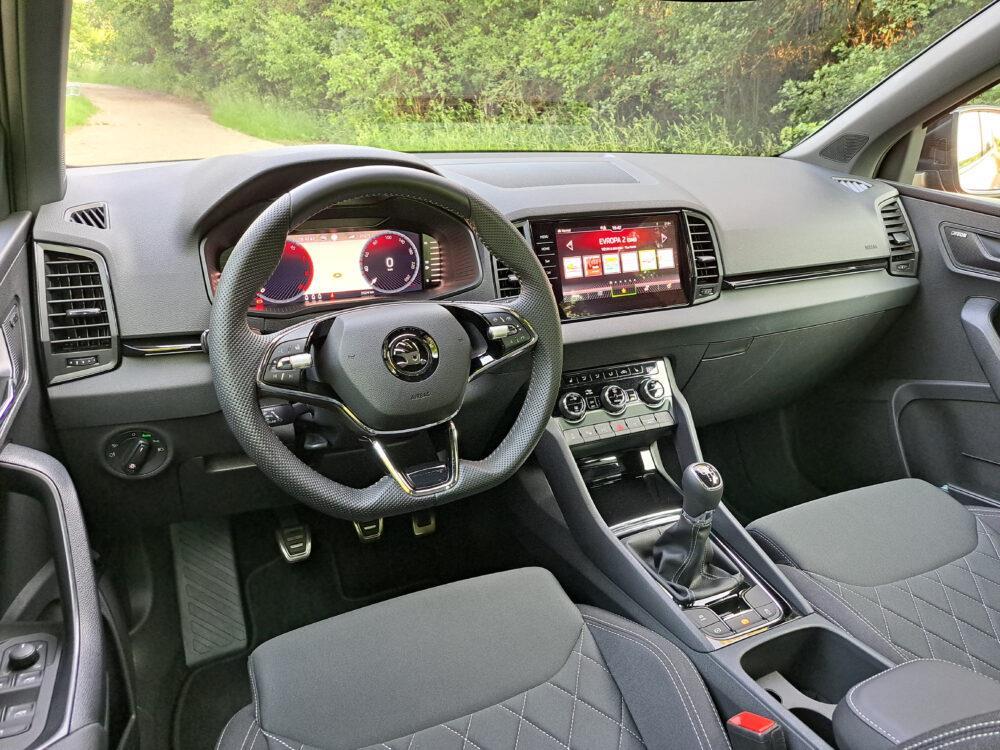
Interior
As part of the car's modernization, its interior was only marginally affected. The Karoq continues to perform very well with interior spaciousness and excellent interior ergonomics. The layout of the dashboard is therefore clear and the control of the car is still mainly represented by classic controls, which is very positive information. The car is newly equipped with different dashboard decors and upholstery that can be made from recycled materials.
The subtle and well-laid out dashboard is dominated by a pair of clear displays. A fully digital and richly dimensioned virtual cockpit (supplied as standard with a diagonal of up to 10.25") is located within the classic chapel, the central part of the dashboard is dominated by the on-board infotainment display elegantly integrated between a pair of air conditioning vents.
The tested, sporty version of the Sportline matches the interior in black, and the multifunctional steering wheel is also equipped with an adequate plaque. In addition, the interior is dominated by sports seats with integrated headrests and sufficient lateral guidance. The Sportline is also equipped with carbon decor in the door panels, and the sporty character is further emphasized by the black roof panel.
The interior space of the car is still very good. The Skoda Karoq still offers the VarioFlex system, i.e. variable arrangement of the rear seats. In principle, these are three split seats in a ratio of 40:20:40, which can be individually moved, folded, or completely removed from the car. An additional payment solution that brings a certain variability and greater interior space to the car.

Offered motorizations and driving impressions
Under the hood of the modernized Karoq, there is still a fairly wide variety of the company's engines. There are three gasoline and one diesel engines on offer.
The basis is a three-cylinder petrol 1.0 TSI (81 kW) cooperating with a six-speed manual transmission. The offer also includes a four-cylinder 1.5 TSI (110 kW) cooperating with either a six-speed manual transmission or a seven-speed DSG automatic. The pinnacle of gasoline engines is the four-cylinder 2.0 TSI (140 kW), which works exclusively with a seven-speed DSG automatic and offers drive to both axles.
The diesel 2.0 TDI is available in two power variants. The 85 kW version is available with a six-speed manual transmission or a seven-speed DSG automatic. The more powerful version with 110 kW will offer the same specification with the only difference being that the version with DSG gearbox is equipped with a drive on both axles.
The tested Sportline was equipped with the top-of-the-range (110 kW) diesel, which worked with a six-speed manual transmission and drove only the front axle. There is little to criticize about the diesel engine under the hood of the Karoq. The drive unit is very well soundproofed towards the interior, offers refined operation and with its 110 kW also enough power. Its cooperation with the six-speed manual is very well tuned, a decent 340 Nm of torque is available from around 1,600 rpm, so the pull comes from low revs and does not force you to constantly shift gears. Defensive driving style results in very decent consumption values, I personally got to a value of 4.8 l/100 km. In the weekly average, the diesel Karoq claimed 5.8 l/100 km.
The car was also equipped with an additional DCC adaptive chassis, the stiffness of which depends on the selected driving mode (Eco, Comfort, Normal, Sport and Individual). Even the Karoq can pamper you with a pleasantly rocking chassis in comfort mode, or add more confidence with stiffer suspension in sport mode.

In conclusion
The modernized Karoq is now available from CZK 638,900 including VAT. This is the basic Ambition trim level with a 1.0 TSI petrol engine (81 kW) and a manual transmission. The cheapest diesel engine 2.0 TDI (85 kW) is available from CZK 688,900, again in the basic Ambition trim level and with manual transmission.
You can then buy the cheapest four-wheeler in diesel specification, i.e. 2.0 TDI (110 kW) DSG 4 x 4, in the basic Ambition equipment from CZK 838,900. The car with two-axle drive and gasoline engine is available from the Sportline equipment level, and its purchase price starts at a considerable amount of CZK 913,900 including VAT.
So, the Skoda Karoq has become quite expensive for us after the modernization, but it is still a long-term successful car offering a well-crafted and spacious interior, a newly rejuvenated and noticeably fresher exterior appearance and, last but not least, a wide range of motorization options, including drive on both axles.
Source: Author's text
Image source: Author's own photos


